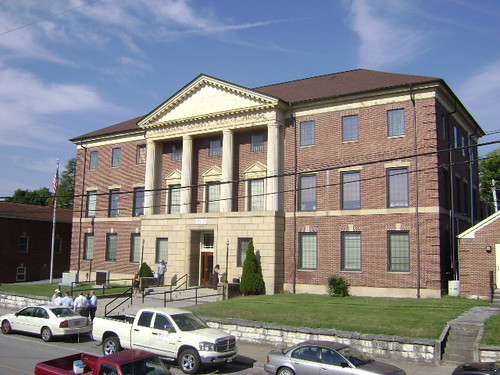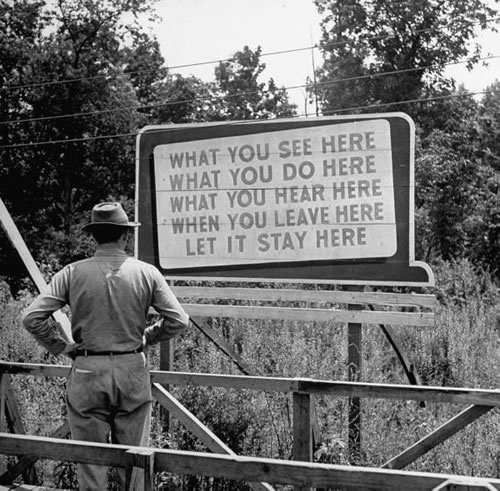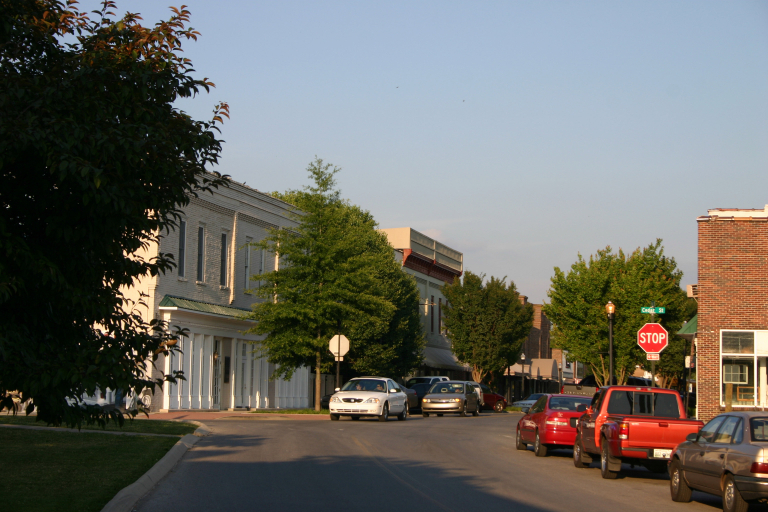Blue Highways: Tazewell, Tennessee
Unfolding the Map
Click on Thumbnail for MapWilliam Least-Heat Moon (LHM) again finds himself driving in wretched conditions, leaving him to ponder briefly the juxtaposition of thesis and antithesis. Directly contradictory things locked together. And it all happened near Tazewell, which you can find by clicking on the map. Comments and e-mails, if you like what you see or have suggestions to make it better, are welcome...just go to the bottom of this post to leave a comment or navigate to the e-mail link on the right side of this page.
Book Quote
"I should have stopped at Tazewell before the light went entirely, but no. It was as if the mountains had me. Across the Clinch River and into the Clinch Mountains; a YOUR HIGHWAY TAXES AT WORK sign loomed up and then one in heart-sinking, detour orange: CONSTRUCTION AHEAD. It should have said, ABANDON ALL HOPE YE WHO ENTER HERE. Figuring I was past the point of return, I pressed on....At each bent-back curve, my lights shone off into clouds, which turned the route into a hellacious celestial highway. It was as if I'd died - one of those movies where somebody breathes his last but still thinks he's alive.
"....Helen Keller, who never drove the Clinch Mountains, said life is a daring adventure or it is nothing. Adventure, an advent. But no coming without a going. Death and rebirth. Antithetical notions lying next to each other, as on a globe the three-hundred-sixtieth degree does to the first. Past and future."
Blue Highways: Part 1, Chapter 17
 Claiborne County Courthouse in Tazewell
Claiborne County Courthouse in Tazewell
Tazewell, Tennessee
LHM really speaks to me in this passage, which I've condensed a little, because of his focus on opposite forces that are linked together. It seems that nothing really exists without its opposite. We usually see one side of the coin or another, and if we're lucky (or unlucky sometimes) we see both.
For example, LHM in his passage is driving through the Clinch Mountains near Tazewell. From photos I've seen on the Internet while doing some background for this post, the area is lovely. The Clinch Mountains are basically one long ridge that extends from Tennessee into Virginia. For you bluegrass lovers, you will recognize the name in the band The Clinch Mountain Boys, a seminal bluegrass band led by Ralph and Carter Stanley. On any day that LHM, or anyone for that matter, were to drive this route, they would probably be taken in by the breathtaking scenery as the mountain road winds its way along the ridge. Even the construction, which would make drivers go slower, might also make them see more scenery and help them appreciate the beauty.
But for LHM, who decided to press on to Morristown rather than stopping in the little town of Tazewell as the light failed, the breathtaking scenery turns into something else entirely. Opposition forces, day and night, light and dark, change the character of the road. LHM references Dante's Inferno. "Abandon all hope ye who enter here." The road become dangerous, a trip not only through construction obstacles in the dark, where in places our only way of seeing (headlights) shine out into the nothingness beyond. The Inferno describes descending into hell as spiraling down through nine circles. LHM winds up along the ridge even as his mind spirals down into fundamental questions of life and death itself.
This speaks to me for many reasons. How many of us have touched opposition forces and seen their power in our lives? How many of us can traverse a forest path with no difficulty in the daytime, but at night are scared silly to be in the same place? How many of us have experienced sadness and happiness in the space of a single day, a single hour, even a single minute? How many of us have seen love turn to hate, or hate turn to love? How many of us have seen vibrant life go dead, but also cold death somehow spark new life? I'm 46 years old, I've seen all these things many times and will experience them many times more along my journey, my continuing advent, my adventure of life.
LHM quotes Helen Keller, a person about whom, every once in a while, a fact turns up that amazes me. Yesterday, while doing a crossword puzzle, I learned that this deaf and blind woman introduced the dog breed known as the Akita to the U.S. Her idea, that life is an adventure or nothing at all, is something that I would do well to remember when in moments of despair over whatever is wrong in my life, I forget that adventures consist of opposites and are not always exciting and exhilirating. Sometimes they are just plain difficult. Sometimes we all must traverse the obstacles and navigate the dangers to fully appreciate the beauty of the celestial highway called life.
If you want to know more about Tazewell
Claiborne County Chamber of Commerce
Clinch Mountain
Clinch River
Wikipedia: Tazewell
Next up: Morristown, Tennessee




 Saturday, July 31, 2010 at 9:26AM
Saturday, July 31, 2010 at 9:26AM


